To make sparkling wine, one has to start by producing a still wine. The second phase of production varies according to the winemaking method chosen by the producer: champenoise (traditional), charmat or transfer method. In any of these methods there is a second fermentation (in bottle or tank) which is preceded by the introduction of fermentation liquor (which contains must and sugar). The second fermentation creates carbon dioxide, characteristic of sparkling wine.
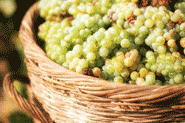
Harvest
Grapes for sparkling wine should be carefully picked and handled. That's why they are usually early harvested. In order to diminish the possibility of an unwanted fermentation, the bunches should be placed in small boxes.
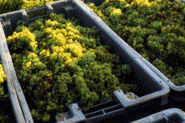
Transportation
Transportation may crush the grapes, especially if the containers are too big, because the weight of the grapes on the top will crush those at the bottom of the container. One of the resulting problems would be an early fermentation of the grapes.
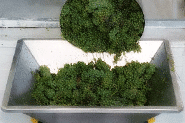
Arrival
The grapes arrive at the winery and are examined to ensure they are in perfect condition. They are then unloaded to the receiving bin (a big container in the shape of an inverted pyramid) and get a sulphur dioxide treatment, which shortens the grapes' oxidation period. Following this, the grapes are taken to the roller crusher, where the berries are separated from the stems (ligneous parts of the bunches).
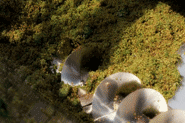
Pressing
If one is producing a white sparkling wine, it is at this point that the grapes are crushed so as to release the juice from the berries. If, on the other hand, it is a red sparkling wine, pressing is performed after fermentation.

Alcoholic fermentation
Fermentation takes place in stainless steel, cement or fibreglass tanks. It is through alcoholic fermentation that sugars from the must are converted into alcohol. This is why a rigorous temperature (which must be low) and must density control is so important.
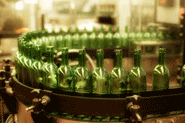
Bottling
The base wine is now bottled. Bottling should be isobarometric, i.e., the pressure inside the bottle has to be constant, in order not to loose gas.
Fermentation Liquor
Fermentation liquor, also known as liqueur de tirage, is made up of must (partially fermented or concentrated), sugar and yeasts. It is added to the base wine allowing a second fermentation (which takes place in the bottle) and the release of carbon dioxide.
Fermentation liquor, also known as liqueur de tirage, is made up of must (partially fermented or concentrated), sugar and yeasts. It is added to the base wine allowing a second fermentation (which takes place in the bottle) and the release of carbon dioxide.
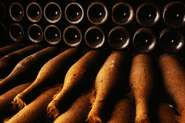
Second fermentation
This process is relatively slow and may last for several weeks, or even months (depending on the type of sparkling wine). Fermentation temperature must be maintained at about 11ºC - 12ºC and the wine should be kept at a cellar for a minimum period of 6 months starting from bottling. This fermentation creates a deposit in the neck of the bottle.
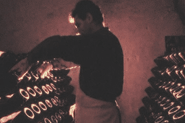
Remuage (or Riddling)
The bottles are placed in racks or giropalettes (bottle containers) so that the lees and fermentation deposits are removed from the wine. This is a manual process and, by rotating the bottle, it is possible to make all lees deposit in the neck of the bottle.

Disgorgement
The bottles are placed in a refrigerator that freezes just a small part of the wine, close to the neck of the bottle, creating a layer of ice and lees. This layer is then expelled from the bottle due to the pressure of the carbon dioxide created during fermentation. This operation may also be performed manually, but by a very skilled person.
Expedition liqueur
After fermenting in bottle, the wine has no sugar. Expedition liqueur is high quality wine mixed with sugar, which is added to the sparkling wine and is going to determine its level of sweetness. If it is a brut sparkling wine (with no sugar), one only adds wine of the same colour as sparkling wine. If it is sweet, it contains the highest amount of sugar allowed in sparkling wines.
After fermenting in bottle, the wine has no sugar. Expedition liqueur is high quality wine mixed with sugar, which is added to the sparkling wine and is going to determine its level of sweetness. If it is a brut sparkling wine (with no sugar), one only adds wine of the same colour as sparkling wine. If it is sweet, it contains the highest amount of sugar allowed in sparkling wines.
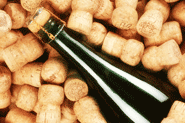
Corking
The bottles, all with the same amount of wine, are corked. Corking is done at low temperatures and without loss of pressure. Afterwards, a cage and foil are put in each bottle.

Second fermentation
In the Charmat method, second fermentation is done in a tank, i.e., in a big container. The wine has to stay in the fermentation tank for at least 18 days.
Filtering
In filtering, the particles in suspension in the wine are eliminated. The wine passes through a membrane filter and the suspended particles and impurities are retained on it.
In filtering, the particles in suspension in the wine are eliminated. The wine passes through a membrane filter and the suspended particles and impurities are retained on it.
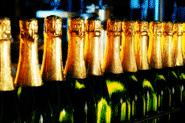
Bottling
Bottling is isobarometric, i.e., pressure inside the bottle is constant, in order not to loose gas.

Second fermentation
This process is relatively slow and may last for several weeks, or even months (depending on the type of sparkling wine). Fermentation temperature must be maintained at about 11ºC - 12ºC and the wine should be kept at a cellar for a minimum period of 6 months starting from bottling. This fermentation creates a deposit in the neck of the bottle.
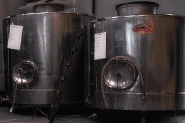
Racking into tank
The wine is transferred from the bottles to a tank. Racking into the tank is done at a temperature of 0ºC. Later, the lees are eliminated.
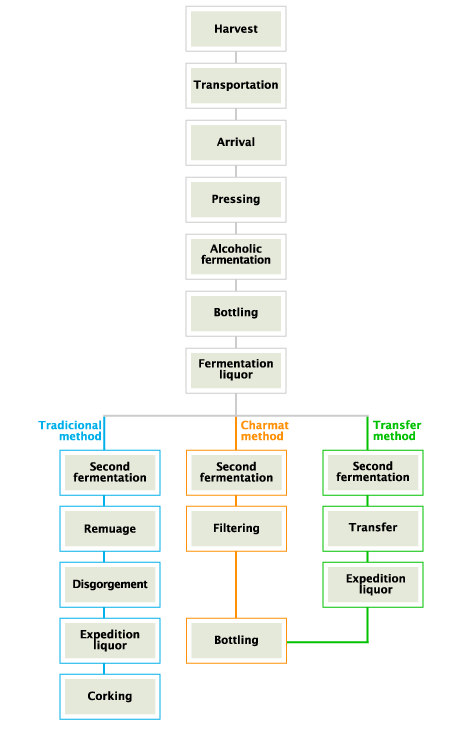


 How wine is made
How wine is made
 How to serve
How to serve




